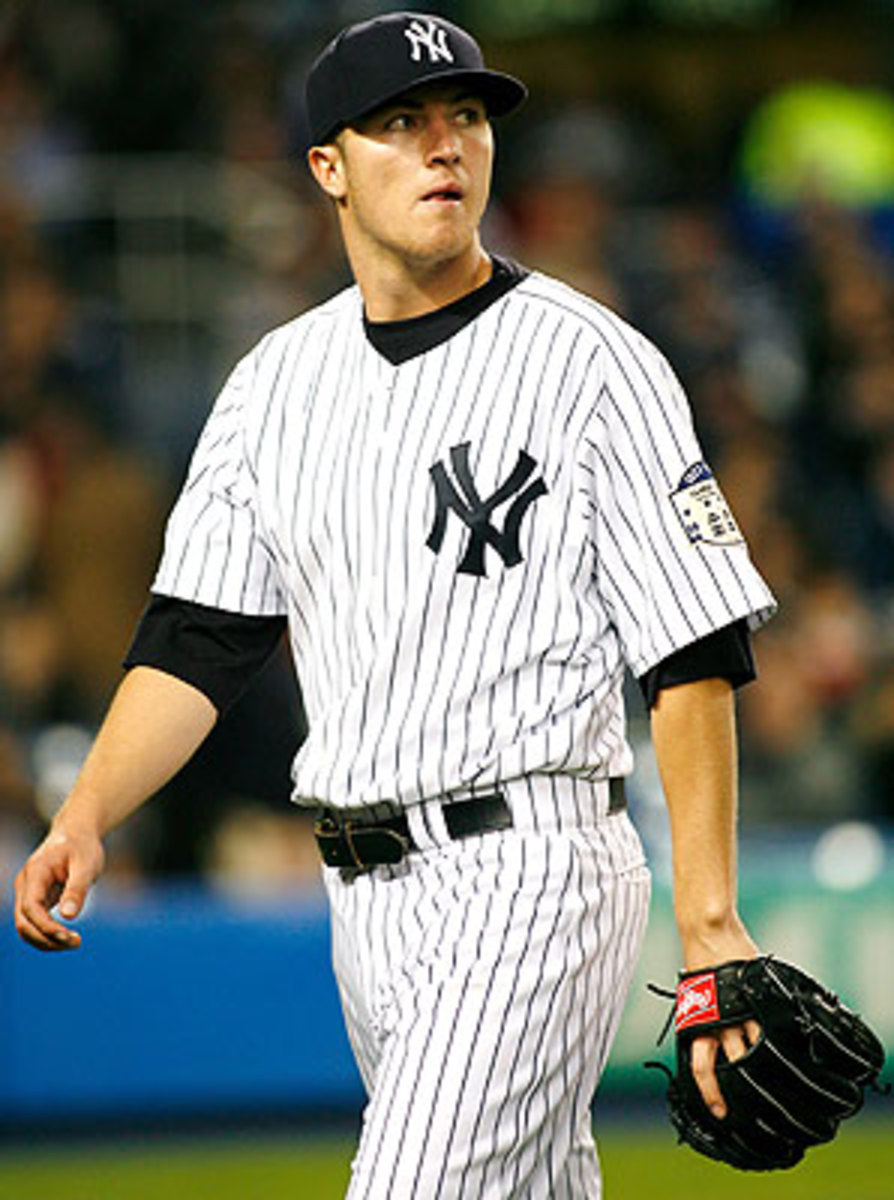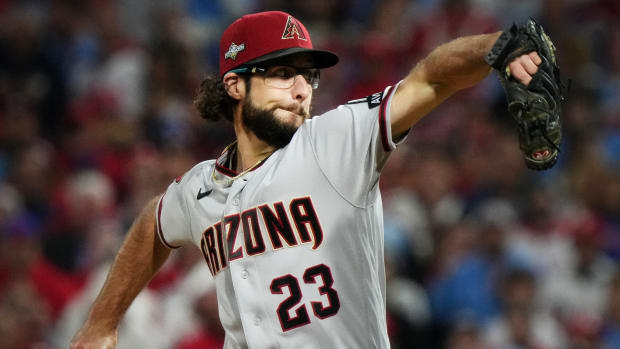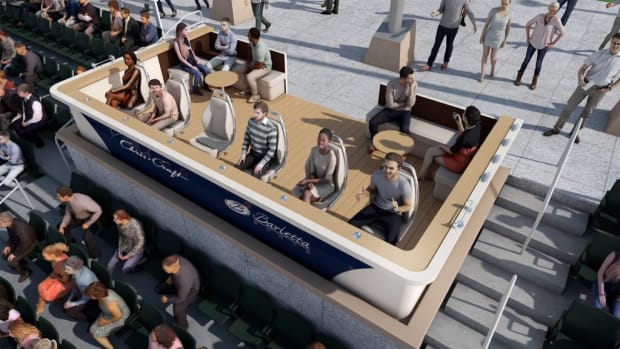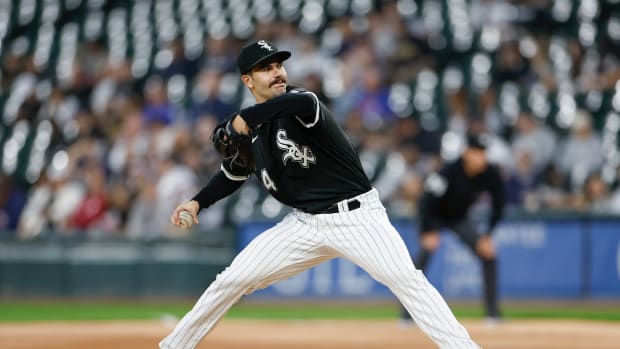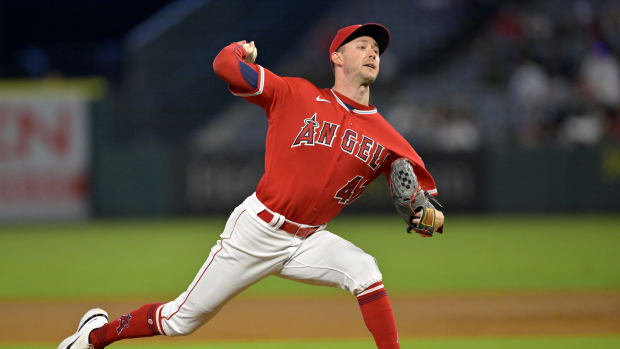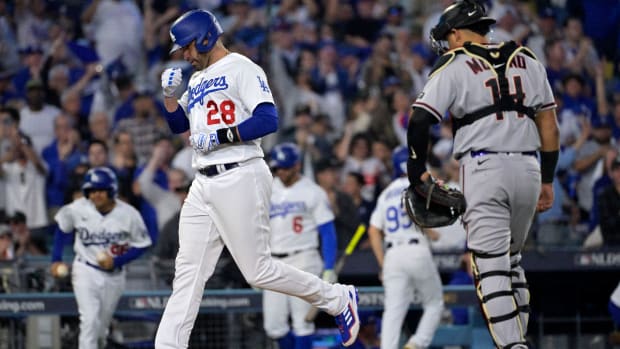GM for a day: Yankees
For the purposes of this exercise, I'll assume there's no turning back the clock. Colleague Joe Sheehanrightly upbraidedYankees GM Brian Cashman for failing to offer Bobby Abreu and Andy Pettitte arbitration, and those decisions are in the books; I won't cheat by hitting the magic "undo" button. We move on.
The Yankees won 89 games last year but finished third in the AL East, missing the playoffs for the first time since 1993. Their offense fell off dramatically, from 5.98 runs per game (best in the majors), to 4.87 per game (seventh-best in the AL). Jorge Posada missed most of the season, Alex Rodriguez couldn't match the previous year's MVP performance, youngsters Melky Cabrera and Robinson Cano took major steps backward, and the rest of the cast slid a year further away from their primes. It was not pretty.
The pitching staff actually improved slightly, from allowing 4.80 runs per game to 4.49, though both were good for eighth in the AL. They did that despite Pettitte and Mike Mussina being the only pitchers who made more than 20 starts. Chien-Ming Wang and Joba Chamberlain both suffered season-ending injuries, and youngsters Philip Hughes and Ian Kennedy missed significant time as well while collectively failing to notch a single win. Grade-D fillers like Darrell Rasner, Sidney Ponson and the undead Carl Pavano took up the slack, all with ERAs well above 5.00.
The rotation's disarray was in part the result of Cashman's failed gambit to rely upon the Chamberlain/Hughes/Kennedy triumvirate -- none of whom had ever pitched a full major league season -- while bypassing the opportunity to trade at least one of the latter two in a blockbuster deal for Johan Santana before the season. As such, the rotation received much of the blame (which came from all sides, including within the organization) for the Yankees' failure to make the playoffs, and their first major order of business this winter was a six-year, $140 million offer to free agent CC Sabathia, the most lucrative pact ever offered to a pitcher.
Even if Sabathia comes to the Bronx, his arrival won't solve everything, as the Yankees have several vacancies created by free agency. Abreu and first baseman/DH Jason Giambi are presumably gone, as is Pettitte, and Mussina recently retired. The Yankees have made one major move this offseason, trading reserve infielder Wilson Betemit and two pitching prospects to the White Sox for Nick Swisher and a pitching prospect. Trading for Swisher is a move I actually advocated in a Hot Stove Preview piece that appeared just hours before the Yankees swung that deal. My thinking was that Swisher's ability to play the outfield and first base would enable a more flexible approach to the winter market, and in particular their pursuit of its top hitter, first baseman Mark Teixeira. Unfortunately, Cashman appears to have settled for Swisher as his first baseman in the hopes of saving his money for Sabathia. For that, and for his arbitration transgressions, he has been reassigned to the mailroom while I take over as GM.
My regime is taking a different approach. Behind nominal staff ace Wang, the Yankees still have those three healthy young pitchers, along with more pitching prospects on the way, starting with reliever Mark Melancon. Improving the rotation is a priority, but given that the organization has only one prime hitting prospect with experience above A-ball -- center fielder Austin Jackson, who's coming off of a .285/.354/.419 season in Double-A as a 21-year-old -- a long-term play to improve the offense is the more pressing concern.
As such, here is my plan:
1. Withdraw the offer to Sabathia, which has been on the table since Nov. 14. He's got only one other known bid in hand (five years and $100 million from the Brewers), but three teams from his home state of California, the Angels, Dodgers and Giants, are all thought to be interested. None will outbid the Yankees, but it seems quite likely that while maintaining an impressive public silence on the matter, Sabathia and agent Greg Genske are working hard behind the scenes to find a West Coast deal with close enough financials that the big man saves face. If he's not sprinting to New York, the money is better spent elsewhere.
2. Sign Teixeira. The one thing this near-miss Yankee team needs the most is a 29-year-old switch-hitting first baseman who's not only coming off consecutive seasons of hitting at least .300/.400/.550, but is also an excellent defender. Call upon the one resource that the Yankees have more of than any other team --cash -- and crush the competition. Outbid the Red Sox, who not only have an interest in adding him to their lineup, but also a vested interest in bidding him up simply to force the Yankees to drain their resources. Outbid the Angels, who traded for him last year and are rumored to be preparing an eight-year, $153 million bid, mindful of the fact that he turned down an eight-year, $144 million extension offer from the Rangers prior to being traded to Atlanta in mid-2007. Outbid the Nationals and the Orioles, two teams hoping against hope to get a hometown discount from the Maryland native. Seriously, make it rain. Agent Scott Boras is said to be looking for 10 years and $200 million; I'm aiming for $160 over eight, but I'll throw in a jet plane or an international airport to be named later. The contract is long, but it's a risk the Yanks must take in order to modernize their offense.
3. With Teixeira signed, Swisher becomes the primary right fielder. He's a switch hitter who's stronger against righties; much of his trouble last year was against lefties (.197/.359/.386). Luckily, I've got lefty-mashing Xavier Nady on hand to platoon (.262/.361/.444 versus southpaws last year, .308/.383/.470 career). They may not be as productive as Abreu, but at 28 and 30, respectively, they're younger and more apt to improve than decline, plus their defense could hardly be worse than Abreu's.
4. Center field is still a problem. Cabrera hit only .249/.301/.341, including a pathetic .235/.280/.286 after May 6, and his defense slipped as well. Since his trade value is currently minimal, I'm keeping him as a reserve outfielder; he can sit in the corner and think about what he's done. Johnny Damon isn't suitable for center field anymore; he's my left fielder now. Brett Gardner doesn't cut it, and Jackson is at least a year away, so I need a stopgap.
To get one, I'm proposing a swap of Hideki Matsui to the Giants for Randy Winn. Matsui is 35, and coming off of a .294/.370/.424 season. He's owed $13 million for 2009 and has a full no-trade clause, but last winter there were reports that he would waive it for a trade to the Giants. Winn is also 35, owed $8.25 million, and has a limited no-trade clause in which he can block deals to up to 10 teams. I'm guessing that a shot at playing for the Yankees would be worth dodging another sub-.500 season. He has only played 166 games in center since 2004, but the DT numbers show him as still above average out there. He hit .306/.363/.426 last year, and should meet his career .347 OBP while holding down the fort.
To make this happen the Yanks will pick up the difference in salaries, of course. Selling Godzilla's ability to play the field might require the pot to be sweetened by taking an extra couple of million off the Giants' plate or throwing in a live arm, but it's doable. The Giants' home-run leader, Bengie Molina, hit just 16 last year; Matsui should be good for 20-25 while carrying his typical .370 OBP, something a team that finished 13th in the NL in that category could sorely use.
5. Time to deal with the rotation. Assume that Wang and Chamberlain are locks, that Hughes or Kennedy will take the No. 5 spot, that Alfredo Aceves, who put up a 2.40 ERA in 30 late-season innings, is my seventh starter behind whichever of the two above is fifth or sixth, and that at least one spare is stretched out at Scranton. That leaves a need for two starters.
For one spot, I sign Derek Lowe, who made former Dodgers GM Paul DePodesta look brilliant for inking him to a four-year, $36 million deal on the heels of an ugly 5.42 ERA in his farewell campaign in Boston. Since then Lowe has ranked 10th in the majors in innings, 11th in SNLVAR, and 12th in ERA+, and he's coming off the best of those four seasons. He hasn't missed a start in seven years, and is the only active major leaguer with at least 10 years of service and no trips to the disabled list. After last year that's music to my ears.
Lowe is also the majors' most extreme ground-baller this side of Brandon Webb, and while the middle infield of Cano and Derek Jeter isn't well-suited for that, I'm banking that the second baseman can bounce back and return to competence in the field. Besides, with Wang in the rotation, I've already bet on the infield defense to some extent, and with Teixeira replacing Giambi, I've at least made one upgrade. If Cano doesn't work out at the keystone, he's headed for leftfield, DH or the glue factory in 2010 so long as this is my team. I'm prepared to go four years on Lowe, even though they're his age 36-39 seasons, and assuming I'll need to spend around $16 million a year, again mindful that the Red Sox may bid him up too.
Having signed Lowe, I'll go high-risk/high-reward for the other spot. I'm not touching A.J. Burnett's shaky track record with a 10-foot pole; instead I'm going to sign Ben Sheets to a two-year, $30 million deal with a vesting option for a third year. Sheets threw 198 1/3 innings last year, his most since 2004, but tore a flexor muscle in his elbow in late September and finished the year on the DL. I'm betting that will hamper his ability to get a long-term deal, and I'm willing to pay more for less, to go as low as 300 innings in 2009-2010 to vest the option, and to include escalator clauses that increase the value of that third year based on innings, All-Star appearances, Cy Young voting or whatever else it takes.
6. With Matsui traded and Damon in left, my DH spot is vacant. I'll need to use Posada there once or twice a week to preserve his 37-year-old body and surgically repaired shoulder. Additionally, I've got Cabrera to play an outfield slot and give someone an occasional half-day off, and whomever isn't playing out of Nady and Swisher as another option as well.
Now that Betemit is history, I need some backup infield options as well. Having already locked up two members of the fin de siècle Holy Trinity of shortstops, I'm intrigued by the possibility of bringing Nomar Garciaparra back east to be a part-time jack of all trades. He's experienced at both infield corners, and in between some 17 stints on the DL last year played a passable shortstop for a few stretches while hitting .264/.326/.466. At around 250-300 plate appearances, many of them coming as DH, he might actually hold up over the course of a season. If Nomar chooses not to come east or to hang up his spikes entirely, Eric Hinkse, who bopped 20 homers for the Rays in just 432 PA, would make for a fine fallback, adding an extra outfield glove in exchange for Nomrar's largely redundant one at short. Either way I can't imagine either player costing more than $4 million.
I'd still need a backup second baseman, and may as well find someone competent at both middle-infield slots. Chris Gomez, Ramon Martinez and Craig Counsell are all capable of providing a .325 OBP in that role, which will do nicely; Counsell's lefty bat makes him the first choice. Since I'll deploy Posada at DH sometimes and be stuck with Jose Molina's weak bat, an offense-minded third catcher would be nice. Greg Zaun or Javier Valentin, both switch-hitters, would be my top choices there; since Joe called dibs on Valentin for the Dodgers, I'll take the former, and work him into the DH rotation as well.
With my work completed, the Yankees would look something like this:
LineupLF-L DamonSS-R Jeter1B-S Teixeira3B-R RodriguezC-S PosadaCF-S WinnRF-S SwisherDH (open)2B-L Cano
BenchC-R MolinaC-S ZaunINF-L CounsellINF-R GarciaparraOF-R NadyOF-S Cabrera
RotationS1-R WangS2-R ChamberlainS3-R LoweS4-R SheetsS5-R Hughes
BullpenCL-R RiveraSU-R BruneySU-L MarteRP-R VerasRP-R RamirezRP-L Coke
That's a lot of flexibility in the lineup with so many switch-hitters, but the rotation tilts entirely to the right, which may provide a reason to do something like sign Oliver Perez (oy vey), or bring back Pettitte instead of Sheets, thereby saving some money. The bullpen I'm reasonably satisfied with, enough to skip a major move, given that shuffling through the young arms in front of Mariano Rivera was an area for which first-year Yankees manager Joe Girardi demonstrated an above-average knack. With Kennedy, Aceves, Melancon, Humberto Sanchez, Chris Britton, Dan Giese and David Robertson, the farm will be brimming with other options besides those above.
As for the price tag on this, with the Yankees moving into their new cash cow of a stadium, money is hardly their biggest concern. Even so, this is actually relatively restrained by their standards. Using the worksheet at the excellent MLB Trade Rumors, and contract data at Cot's Baseball Contracts, the 25-man roster above comes in at $189 million before the raises due Wang, Bruney and Nady, and generously assuming straight average annual value figures for the big-ticket free agents. Right there that's $20 million less than last year's Opening Day payroll, and even if the free-agent figures creep up a million here or there, the 2009 Yankees will be cheaper than their predecessors -- and likely more successful.






























